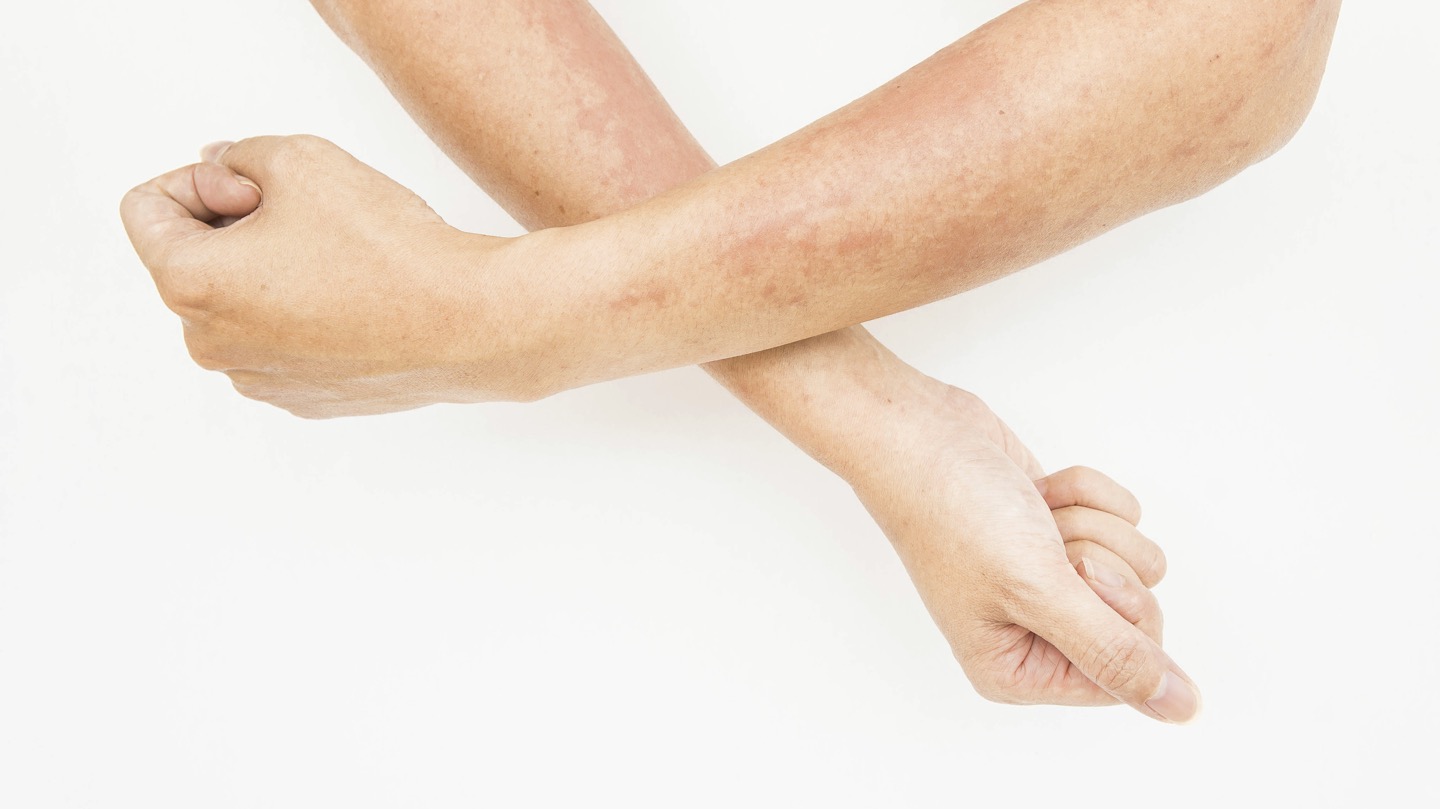Psoriasis is an autoimmune disease that affects the skin and joints, among other parts of the body. “Autoimmune” means that the body’s immune system mistakenly attacks various tissues and structures in the body. In the case of psoriasis, the skin is attacked, leading to flaking, itching, and often the development of sores. Joints can also be affected by psoriasis. Sun therapies have long been used as part of the treatment. Unfortunately, sunlight has not only positive effects, as too much sun exposure can lead to negative effects. This is where therapies involving red and infrared light have become popular because they have an effect without the side effects associated with sunlight.
Since inflammation drives psoriasis, most medical therapies aim to reduce these processes. Research also suggests that the inflammation that occurs in psoriasis affects the entire body and increases the risk of heart and vascular diseases and type II diabetes. Therefore, it is of the utmost importance to control inflammation. To achieve this, anti-inflammatory medications such as cortisone and chemotherapy drugs are used. Unfortunately, these treatments are far from free of side effects, so it is crucial to do what you can through lifestyle.
What Affects Psoriasis?
It has been known for some time that factors such as stress, alcohol, diet, and obesity affect the activity of psoriasis. Here, it is important to minimize stress, consume alcohol moderately, and avoid obesity as much as possible. Diet is also important as it can have both positive and negative effects. Eating plenty of vegetables, berries, fiber, fatty fish, and various spices appears to be beneficial in alleviating the disease. Basing one’s diet on these foods not only has a positive effect on psoriasis but also on a range of other lifestyle factors. Conversely, there are many foods that can exacerbate inflammatory processes and thereby make life worse for those with psoriasis. Such aggravating foods include fried and heavily processed industrial foods like chips and fast food. Additionally, refined carbohydrates and sugar are something one should minimize.
It has been known for some time that sunlight has a positive effect on psoriasis. Sun therapy has been one of the classic methods to reduce the negative effects of the disease. The problem with sunlight is that it can also damage the skin, at least in high doses. Can you get the benefits of light without the harmful effects? The answer to the question seems to be “yes.”
Infrared and Red Light for Psoriasis
Sunlight provides a broad spectrum of light, including what we can perceive with our eyes and what lies beyond our field of vision. UV light is the type of light that tans our skin in the summer, but it is also the type of light that can damage the skin and is what we want to target when using tanning beds, for example. There is also infrared light, which is light of such a long wavelength that our eyes cannot perceive it. Infrared light, as well as visible red light, has been shown to provide many of the positive effects of sunlight. Furthermore, the frequency is so low that there is no risk of side effects with normal use. Red and infrared (NIR) light therapy has become very popular for use against psoriasis, and research suggests that it can actually alleviate symptoms without side effects.
How Does It Work?
Light of certain frequencies, such as red and infrared light, can activate so-called photoacceptors inside our cells. One such photoacceptor is cytochrome c oxidase, and when it is activated, several things happen in the body, including improved healing and reduced inflammation. Researchers refer to this as bio-photomodulation, while users often describe it as “magic.” Additionally, tissue oxygenation can be positively affected, and the body’s own production of antioxidants increases. This combination is believed to have positive effects on inflammatory conditions, including psoriasis.
One advantage of this form of therapy is that the risk of side effects is non-existent, so it may be a good idea to try this type of therapy. If you find that you are experiencing beneficial effects, it might be worth investing in such a lamp for home use, which of course makes it both easier and more cost-effective to undergo regular treatment. The fact that you can also gain a wide range of other health benefits is a nice bonus!
References:
Derek Ho, Eugene Koo, Andrew Mamalis, Jared Jagdeo. A Systematic Review of Light Emitting Diode (LED) Phototherapy for Treatment of Psoriasis: An Emerging Therapeutic Modality. J Drugs Dermatol. 2017 May 1;16(5):482-488.
M M Kleinpenning 1, M E Otero, P E J van Erp, M J P Gerritsen, P C M van de Kerkhof. Efficacy of blue light vs. red light in the treatment of psoriasis: a double-blind, randomized comparative study. J Eur Acad Dermatol Venereol. 2012 Feb;26(2):219-25. doi: 10.1111/j.1468-3083.2011.04039.x. Epub 2011 Mar 24.
Glynis Ablon 1. Combination 830-nm and 633-nm light-emitting diode phototherapy shows promise in the treatment of recalcitrant psoriasis: preliminary findings. Photomed Laser Surg. 2010 Feb;28(1):141-6. doi: 10.1089/pho.2009.2484.
Author: Martin Brunnberg



